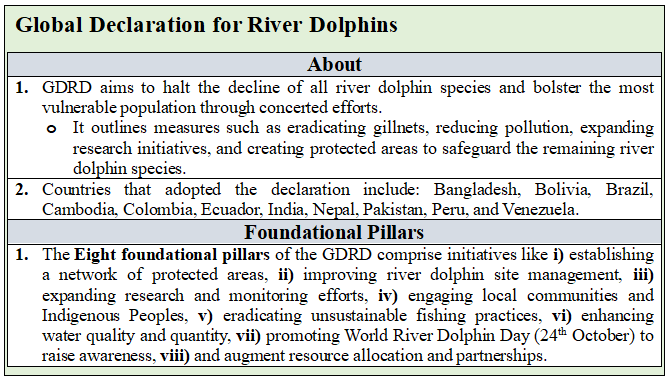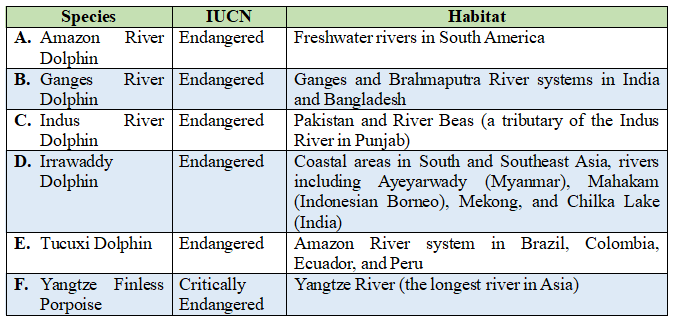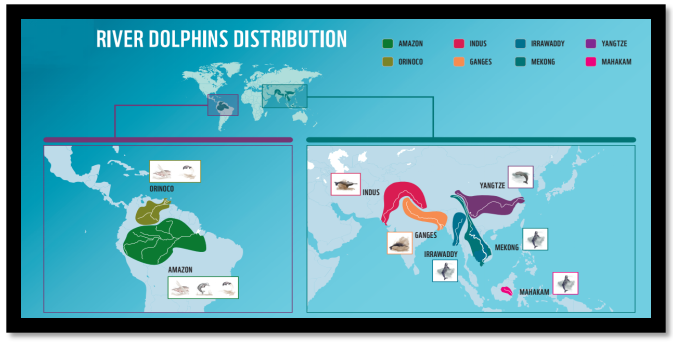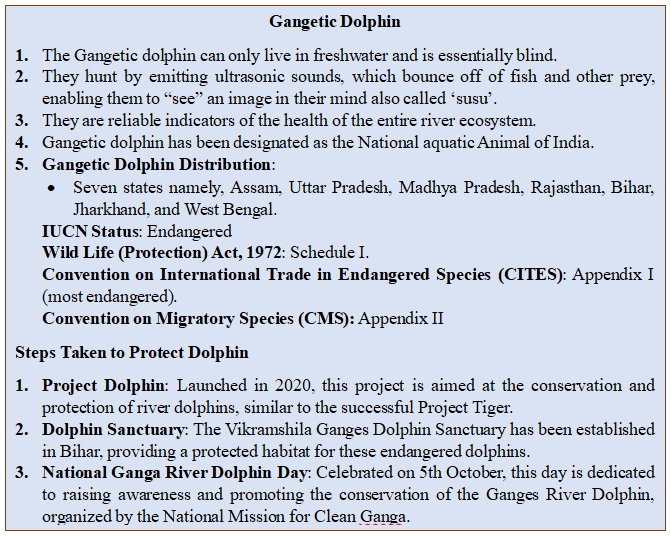- Courses
- GS Full Course 1 Year
- GS Full Course 2 Year
- GS Full Course 3 Year
- GS Full Course Till Selection
- CSAT
- 5 LAYERED ARJUNA Mentorship
- Public Administration Optional
- Online Program
- GS Recorded Course
- NCERT (Recorded 500+ Hours)
- Polity Recorded Course
- Geography Recorded Course
- Economy Recorded Course
- AMAC Recorded Course
- Modern India, Post Independence & World History
- Environment Recoded Course
- Governance Recoded Course
- Science & Tech. Recoded Course
- International Relations and Internal Security Recorded Course
- Disaster Management Module Course
- Ethics Recoded Course
- Essay Recoded Course
- Current Affairs Recoded Course
- ABOUT US
- OUR TOPPERS
- TEST SERIES
- FREE STUDY MATERIAL
- VIDEOS
- CONTACT US
Global Declaration for River Dolphins
Global Declaration for River Dolphins
02-11-2023

Context
- Recently, 11 Asian and South American countries have signed a groundbreaking Global Declaration for River Dolphins (GDRD) in Bogota, Colombia to protect the world’s six surviving species of river dolphins.
- This landmark deal signifies a ray of hope in tackling the severe decline of river dolphin populations, which have dwindled by 73% since the 1980s.

Need for such initiative
- River Dolphins are top predators in some of the world’s greatest river systems and important indicators of the river’s health.
- This initiative comes after decades of alarming population declines in river dolphins, with numbers plummeting by 73% since the 1980s due to various threats, including unsustainable fishing practices, pollution, habitat loss, and even the impact of climate change.
Surviving species of river dolphins


Challenges Faced by River Dolphins
- River dolphins are threatened by diverse factors, including i) unsustainable fishing practices, ii) hydropower dam construction, iii) pollution from various industries, iv) agriculture, and v) mining, as well as habitat loss.
- Also, the recent tragic deaths of over 150 river dolphins in the drought-stricken Lake Tefe in the Amazon illustrate how climate change poses an increasingly severe threat to their survival.
Successful Conservation Efforts:
- Conservation efforts in populated river basins like the Indus and Yangtze have seen success.
- For instance, the Indus River dolphin population in Pakistan doubled due to joint stakeholder action.
- Additionally, the Yangtze finless porpoises witnessed a 23% increase in numbers owing to protective measures.
- Moreover, the World Wildlife Fund's electronic pinger project saved 80 dolphins in Indonesia's Mahakam River from gill net entanglement.




